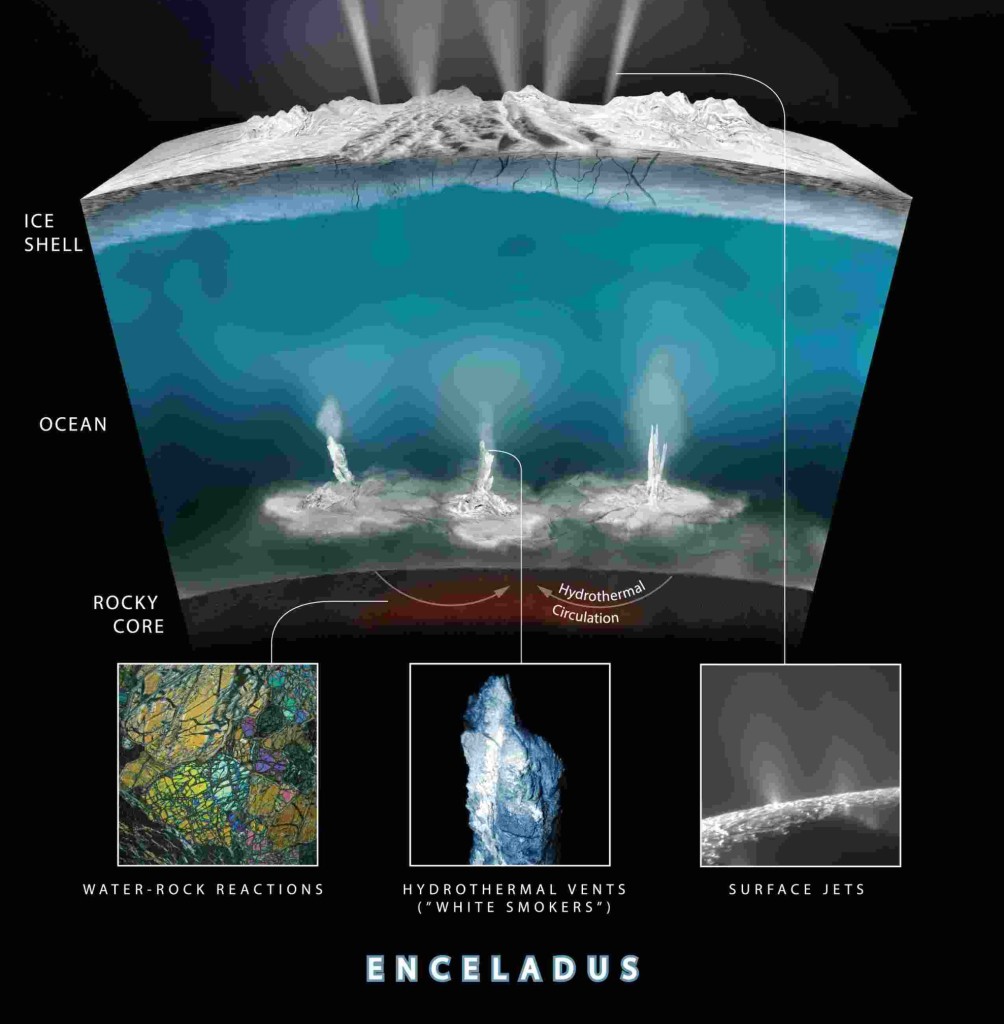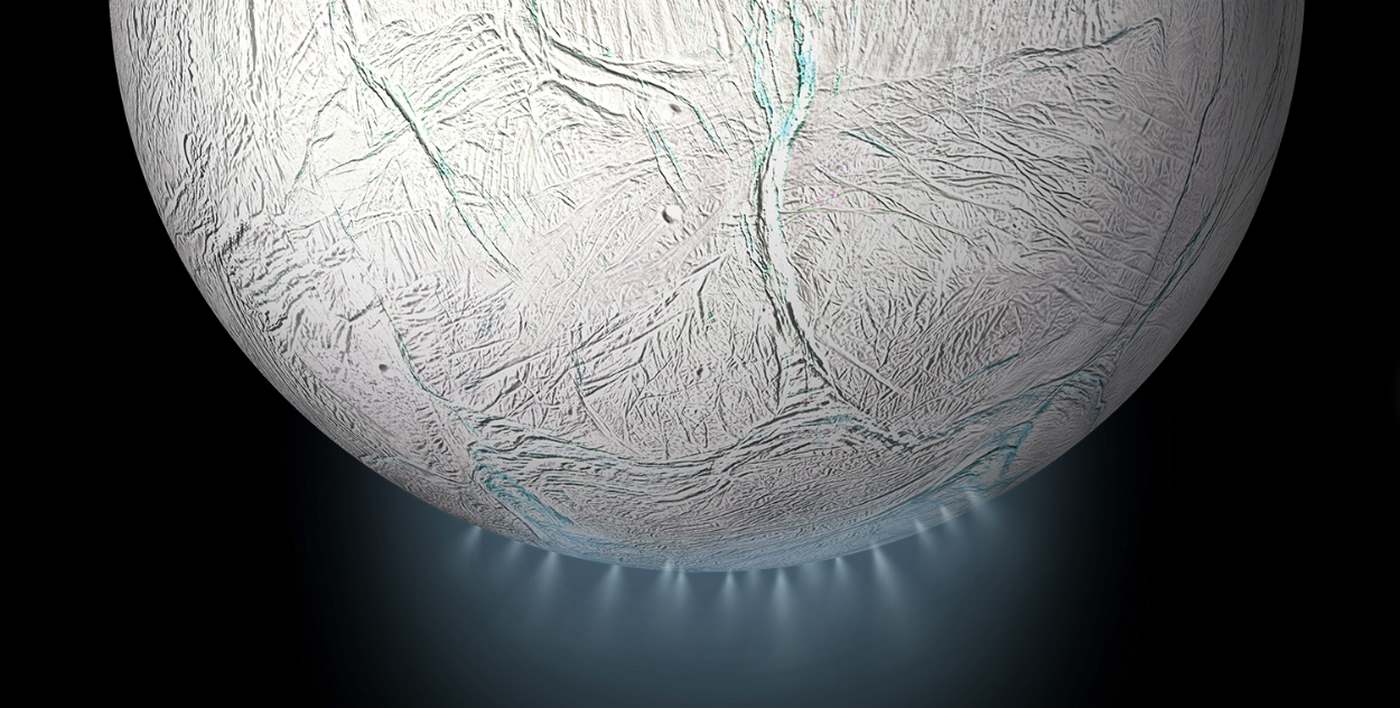
Evidence of life on the icy Saturnine moon of Enceladus could be uncovered by a robot spacecraft sampling plumes of methane jetting out of its liquid interior, scientists suggest.
All NASA needs would be a robot that can either sample these plumes, or punch through the planet’s icy exterior to what we now know is a warm, salty ocean below.
When it was first surveyed by NASA in 1980 it looked like a not-too-exciting snowball in the sky.
A second NASA mission between 2005 and 2017 found its thick layer of ice hides a vast, warm saltwater ocean outgassing methane, a gas that typically comes from microbes on Earth.
The methane was discovered when the mission’s Cassini spacecraft flew through giant water plumes erupting from the surface of Enceladus.
Last year, scientists from the University of Arizona in the US and Université Paris Sciences et Lettres in France worked out that if life has emerged on Enceladus, this could explain why methane is found there.
While the number of bacteria in its ocean would be small, all it would need to uncover them would be a visit from a robot spacecraft.
Professor Régis Ferrière from the University of Arizona recently lead a study that showed how a well-equipped robot wouldn’t even need to land on Enceladus, but only fly through one of its plumes to “confidently” determine whether life has evolved there.

Why Enceladus?
One of Saturn’s 83 moons, the surface is like a frozen pond glinting in the sun, and it reflects light like nothing else in the solar system.
Along the moon’s south pole, at least 100 giant water plumes erupt through cracks in the icy landscape created by Saturn’s gravity. The excess methane expunged in the plumes resembles Earth’s hydrothermal vents found under the sea where two tectonic plates meet each other.
Where they meet, hot magma below the sea floor heats the ocean water in the porous bedrock creating “white smokers” which release scorching hot, mineral-rich sea water.
RELATED: NASA Measures Interior of Mars for the First time, Revealing Huge Liquid Core
Tiny organisms under the sea have no access to sunlight so they need the energy from chemicals released by white smokers to stay alive.
“On our planet, hydrothermal vents teem with life, big and small, in spite of darkness and insane pressure,” Ferrière recently explained. “The simplest living creatures there are microbes called methanogens that power themselves even in the absence of sunlight.”
Methanogens convert dihydrogen and carbon dioxide to gain energy and release methane as a byproduct.
The researchers’ calculations were based on the theory that Enceladus has methanogens that inhabit oceanic hydrothermal vents resembling the ones found on Earth.
MORE LIKE THIS: NASA Detects Carbon Dioxide–the Building Block of Life–in Exoplanet’s Atmosphere for First Time
The team worked out what exactly the total mass of methanogens on Enceladus would likely be, as well as the likelihood that their cells and other organic molecules could be ejected through the plumes.
The team say any regions of Enceladus that contain life would feed the plumes with just enough cells or organic materials to be picked up by instruments on a future space ship.
The team say a future mission may struggle to find direct evidence of life but the presence or absence of certain organic molecules, such as particular amino acids, would serve as indirect evidence for or against an environment abounding with life.
“The definitive evidence of living cells caught on an alien world may remain elusive for generations,” said the study’s first author Dr. Antonin Affholder. “Until then, the fact that we can’t rule out life’s existence on Enceladus is probably the best we can do.”
Scientists now want to go back to Enceladus and one mission proposes to land there in the 2050s to collect “extensive” data about it.




















